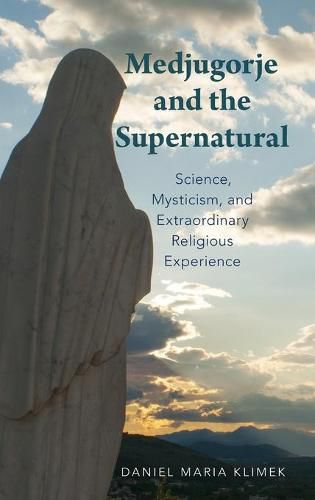Readings Newsletter
Become a Readings Member to make your shopping experience even easier.
Sign in or sign up for free!
You’re not far away from qualifying for FREE standard shipping within Australia
You’ve qualified for FREE standard shipping within Australia
The cart is loading…






In June 1981, six young Croatians in the village of Medjugorje, in the former Yugoslavia, reported that the Virgin Mary had appeared to them. The Medjugorje visionaries say that Mary has returned every day since then, bringing them important messages from heaven to convey to the world. Throughout history, people have reported encountering extraordinary religious experiences-apparitions of the Virgin Mary, visions of Jesus Christ, weeping statues and icons, the stigmata, physical healings and miracles, and experiences of the afterlife-and interpreted them as supernatural in origin. Scholars have often tried to reinterpret such experiences, including those described by the great mystics like Francis of Assisi, Catherine of Siena, and Teresa of Avila, into natural or psychopathological categories, such as hysteria, hallucination, delusion, epileptic seizures, psychosis, the workings of the unconscious mind, or fraud. Are such reductionist explanations valid? Over the past three decades the Medjugorje visionaries have been subjected to extensive medical, psychological, and scientific examination, even while undergoing their visionary experiences. Daniel Klimek argues that the case of Medjugorje affords a rare opportunity to understand a deeper dimension of extraordinary religious phenomena. Presenting and analyzing the scientific studies on the visionaries in juxtaposition with the major scholars and debates surrounding religious experience, Klimek concludes that a multidisciplinary approach grants a more holistic and deeper understanding of such extraordinary religious experiences.
$9.00 standard shipping within Australia
FREE standard shipping within Australia for orders over $100.00
Express & International shipping calculated at checkout
In June 1981, six young Croatians in the village of Medjugorje, in the former Yugoslavia, reported that the Virgin Mary had appeared to them. The Medjugorje visionaries say that Mary has returned every day since then, bringing them important messages from heaven to convey to the world. Throughout history, people have reported encountering extraordinary religious experiences-apparitions of the Virgin Mary, visions of Jesus Christ, weeping statues and icons, the stigmata, physical healings and miracles, and experiences of the afterlife-and interpreted them as supernatural in origin. Scholars have often tried to reinterpret such experiences, including those described by the great mystics like Francis of Assisi, Catherine of Siena, and Teresa of Avila, into natural or psychopathological categories, such as hysteria, hallucination, delusion, epileptic seizures, psychosis, the workings of the unconscious mind, or fraud. Are such reductionist explanations valid? Over the past three decades the Medjugorje visionaries have been subjected to extensive medical, psychological, and scientific examination, even while undergoing their visionary experiences. Daniel Klimek argues that the case of Medjugorje affords a rare opportunity to understand a deeper dimension of extraordinary religious phenomena. Presenting and analyzing the scientific studies on the visionaries in juxtaposition with the major scholars and debates surrounding religious experience, Klimek concludes that a multidisciplinary approach grants a more holistic and deeper understanding of such extraordinary religious experiences.